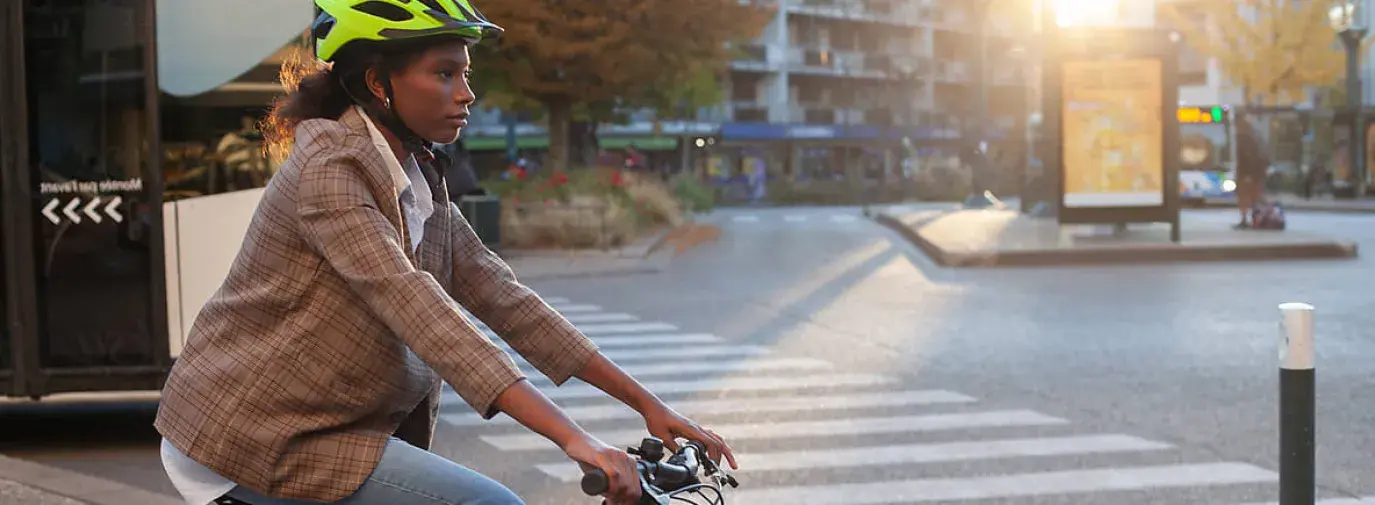
Being more sustainable on a budget doesn’t just mean cutting down on costs – you can actually save money going green. To help you become more environmentally friendly while you save money, we’ve compiled this list of strategies to get you started.
One Less Car
Transportation produces the largest share of U.S. greenhouse gas emissions at 29% of our total. If we all drove 10% less than we do now, we would see a reduction of about 110 million metric tons of carbon dioxide emissions, or the equivalent of powering nearly 14 million homes for one year.
Ditching your car entirely is a huge step towards reducing carbon emissions, as is reducing a two-car household to one car only or making your second car an electric vehicle (something the IRA can help with, and that will save money in the long-term). Simply replacing as many car-trips as possible with walking, biking, or public transportation is a good option as well.
“My favorite is to run errands on foot or on my bicycle. I save money on gas and get some exercise at the same time. I also avoid the hassles of being stuck in traffic,” says Todd Larsen, Green America’s Executive Co-director for Consumer and Corporate Engagement. “And it’s better for the planet.”
Love Your Local Library
What’s not to love about public libraries? Libraries reuse resources in countless different ways, providing the public with accessible information and entertainment while contributing to carbon footprint reduction. Many libraries are now expanding beyond books, circulating a wide range of materials, such as craft kits, baking supplies, yard games, and more for their patrons.
“I get a lot of my books from Little Green Libraries or public libraries. The books are free, and I give them back after I’ve read them for others to enjoy,” says Larsen.
Grow Your Own
Gardening is a fun and cost-effective way to go green (literally!) and save money. If you have access to space for your own garden, winter is a great time to begin designing your plot for next season. If you don’t have your own space, consider other ways of planning ahead this winter to grow your own food in the spring—by seeking out local community gardens or working to start a new one with your city, house of worship, or local school.
The National Gardening Association has estimated that with a $70 per year investment you can grow up to $600 of fresh vegetables—a $530 savings! If you find yourself with more produce than you need, you can also consider trading your excess with others (another way to save money), donating to your local food bank, or preserving your excess by canning or freezing to keep saving money all winter long. Thrift stores are always chock full of mason jars, which are the perfect canning materials.
Green While You Clean
Looking at standard cleaning products reveals several opportunities for sustainable swaps: replacing paper towels with rags, making your own solutions like all-purpose cleaner and laundry detergent, and swapping single-use spray bottles with reusable glass alternatives are just a few steps that transform household upkeep into environmental support. Even personal hygiene products become a chance to make a difference.
“My favorite green-on-a-budget tip is bar shampoo and conditioner! It’s so much more bang for your buck, involves no plastic, and lasts for months,” says Anya Crittenton, Green America's Senior Writer & Senior Green Business Network Marketing Specialist. “Plus, there’s so many options for scents and hair types. I’m particularly obsessed with my purple bar conditioner to help keep my blonde from becoming too brassy—just as good, if not better, than a bottle!”
Reuse, Reuse, Reuse
Incorporating a philosophy of reuse into your lifestyle not only contributes hugely to waste reduction and climate health but will also take some pressure off your wallet. Plus, there are so many ways to implement this concept!
Consider participating in community exchange groups (for everything from clothing to tools, appliances, or other household items); ditching single-use items for reusable alternatives; and frequenting resale stores and warehouses, yard sales, garage sales, and flea markets.
“I look for clothes, furniture and garden tools first at resale stores—it’s surprising how often you can find good quality things this way,” says Mary Swanson, Senior Programs Specialist at Green America’s Clean Electronic Production Network.
What Really Matters? Buy Less.
When we put out our trash, it goes to landfills or industrial waste incinerators. Whether buried or burned, our trash generates methane and nitrous oxide, two greenhouse gases more harmful than carbon dioxide. Household consumption as a whole contributes to up to 60% of global greenhouse gas emissions, according to the U.S. Environmental Protection Agency. Making more intentional choices about our purchases not only helps alleviate this massive impact on the environment, but also directly reduces the amount of money we’re spending on a wide range of material goods.
“I think the best eco-label on a product would read: ‘Do you really need this?’ I try to avoid impulse purchases by meal planning and shopping from a list at the grocery store,” says Swanson.
Low- and No-Cost Gifts
We recommend applying these cost-saving ideas to your holiday giving, and perhaps agreeing with friends and family to spend less money, while still making the season meaningful. Reused items, such as vintage vinyl records or clothing, can make excellent gifts, as can passing along a treasured heirloom. Friends and family will appreciate your time and talents as much as a material object, so consider writing a heartfelt letter as a gift, or providing an experience—maybe a home-cooked meal, prepared with preserved veggies from the garden.
Tapping into techniques and resources like these can open the door for your own budget-friendly social and environmental impact.
Updated January 2026.







